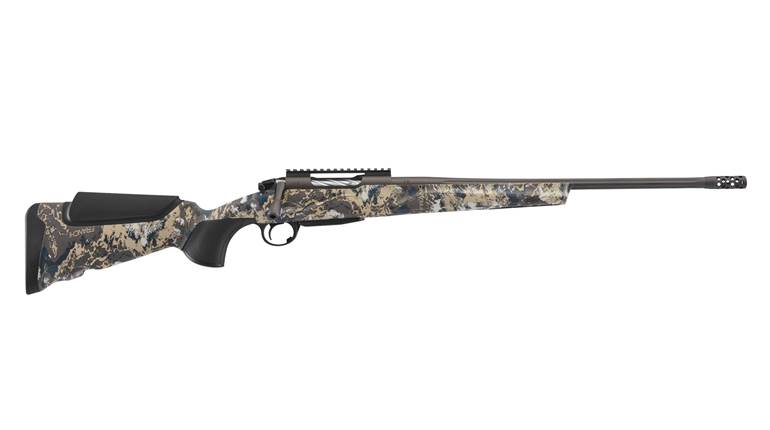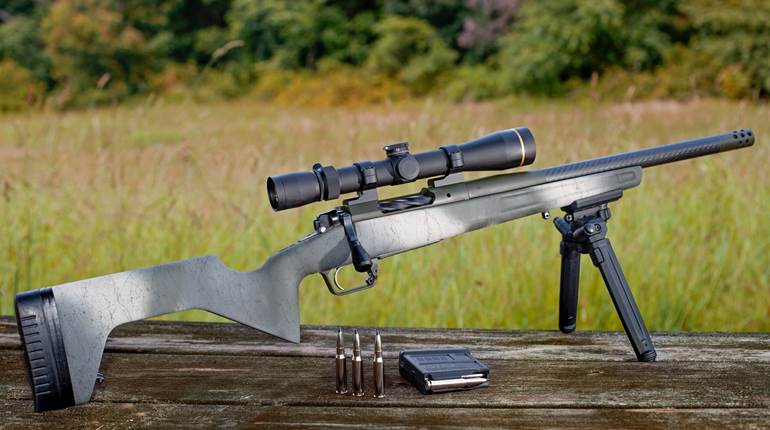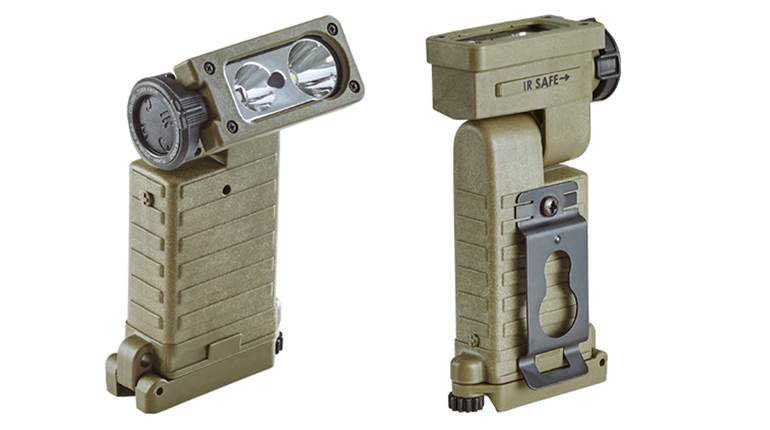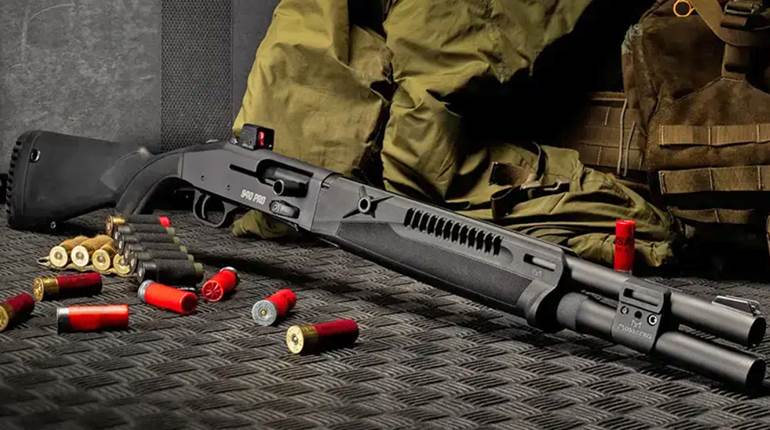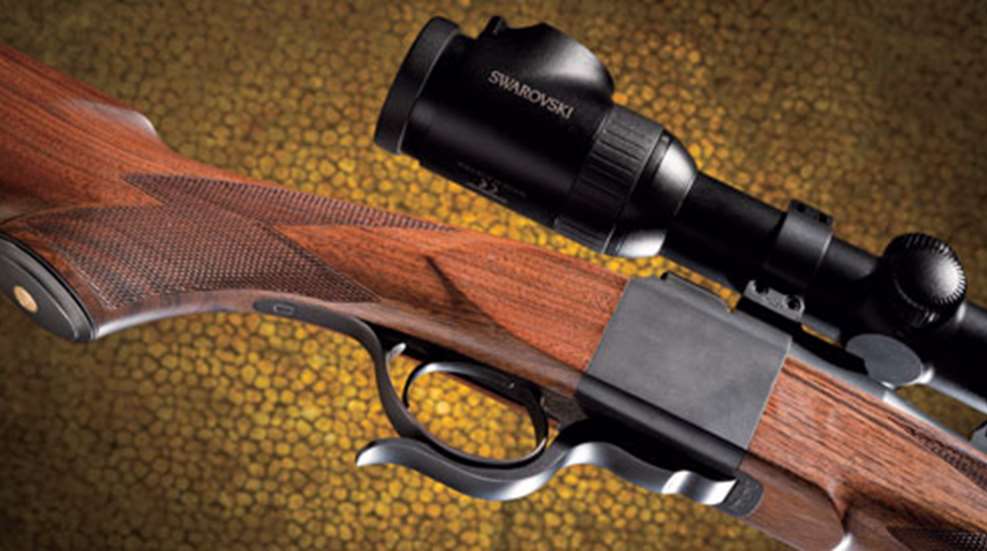
Talk about good cop, bad cop. The first Customs officer looked over my documents and luggage cart, then said, “Wow, hunting in Tanzania—that must have been great.”
“Sure was.”
“What is your employment, Mr. Zent?”
“I’m an editor … I work for NRA.”
He smiled big at that and wanted to bump fists. “I’m in! I’m one of your members! You guys do a great job for law enforcement. Welcome home! Now proceed over to Row C.”
At the end of Row C I waited impatiently for the inspector to beckon. It had been a long trip, concluding with two and a half days in transit, and I was aching to get back home. Then for five minutes the man scowled back and forth between my passport, the customs forms and his computer monitor. Finally he questioned, “What kind of gun is it? Dakota? That the manufacturer?”
“Correct.”
“Well I don’t see that here,” he glared at the monitor. “Let’s have a look. Put the gun case up here, unlock but don’t open it, step back and put your hands on the rail where I can see them.”
Whoa—never heard of Dakota rifles? Can’t be much of a gun guy, I thought.
As he pulled the big bolt rifle from its case his hard look eased. “You shoot anything with this?”
“A Cape buffalo.”
“Nice,” he said, sounding genuinely appreciative. Then after placing the rifle back down he reached out briefly to touch the handsome XXX-grade walnut buttstock. “Very nice.”
Maybe he was more of a gun guy than I had assumed, or maybe getting his hands on a truly fine firearm had triggered some kind of transformation. If so, he certainly wasn’t the first American shooter inspired by a Dakota.
Refining A Classic
More than any other rifle, the Dakota Model 76 is America’s answer to vintage British bolt-actions that earned renown in African gamefields. Like the Rigbys, Holland & Hollands and Westley Richards studded throughout safari literature, it is based on the Mauser 98 controlled-round-feed platform that adapts beautifully to medium- and big-bore variants. Also like the Brits, the Dakota is widely admired for workmanship that clearly sweats the details in fit, finish, functionality and good looks.
And that’s what elevated it a notch above its other progenitor, the Winchester Model 70. Designers purposely modeled the Dakota rifle after the Model 70’s styling and fire controls, in fact it was intended to reincarnate the beloved “rifleman’s rifle” at a time when Winchester had surrendered to push-feed economics and before other American-made clones had surfaced. But even at their pre-’64 best, Supergrade Model 70s rarely sported wood equal to Dakota’s baseline XX-grade walnut and were never so lavishly hand-finished.
Though America’s gun culture quickly acclaimed her the prettiest girl in town, the ensuing courtship has actually been rather stormy. Naysayers howled at a rifle that cost three or four times more than market-leading bolt-actions, and some owners expressed disappointment in their costly rifles’ accuracy. Then after the 2003 death of Dakota founder Don Allen, ownership changes and mismanagement put the company onto a financial roller coaster that ultimately resulted in bankruptcy and receivership. When unpaid suppliers balked, orders were delayed, and guns that did emerge didn’t always have the fine wood that makes a Dakota a Dakota. Many predicted Dakota’s demise. But because a determined, if demoralized, group of machinists, assemblers and stockmakers kept showing up and working with what they had, continuing to build guns even when the next paycheck wasn’t a sure thing, the doors stayed open. Just when things were looking particularly bleak, an angel stepped in.
This well-heeled angel, Freedom Group, acquired Dakota in June 2009, further diversifying a firearm portfolio ranging from old-liners, such as Remington and Marlin, to prominent AR makers Bushmaster and DPMS. Unlike most of the others, Dakota will never generate high sales volumes or government contracts. Could it be that the money men behind Freedom Group aren’t the tightfisted bean counters gun writers often imagine? Could it be they truly are lovers of fine guns? More importantly, do these sharp businessmen see a profitable future making high-end hunting rifles?
In September I hunted in Africa with an array of newly manufactured Dakota rifles, and then a month later I visited the plant in Sturgis, S.D. There I got to meet many of the hard-working, hometown heroes who kept Dakota going, and I saw first-hand how infusions of capital and new technology are allowing them to produce rifles that look as good as ever, and likely shoot even better.
Ambitious Origins
Dakota arrived on the scene in 1986 when Allen and fellow custom gunsmith Pete Grisel collaborated to design the Model 76. Although they were master craftsmen, both men were also ahead of their time in embracing emerging technology. Allen was the wood specialist, a noted stockmaker who traded in fancy woods and designed and built stock-duplicating machinery. Grisel was a machinist who early on realized the potential of computer-numeric-controlled (CNC) centers to make firearm components that included his coveted original actions and bottom-metal assemblies.
They touted their creation as combining the best features of the 98 Mauser and Model 70, but in fact it improved the breed. Dakota’s bolt body, like the Mauser’s, extends forward of the twin locking lugs 0.167 of an inch where, upon lockup, it protrudes into a recessed breech. The case head is then enclosed in a solid steel collet, an effect similar to the safety-conscious system provided by the Remington Model 700 and others, though achieved by different means. Clearly it improves on the Model 70’s open cone breech/bolt face engagement that does not fully support the case head. The familiar Mauser claw extractor is fully 0.385 of an inch wide for utmost strength in removing stubborn cases, and a spring-mounted ejector angles up from the receiver floor. The bolt must be cycled completely rearward to eject and reload.
The Dakota bolt release is machined to fit flush into the upper left receiver wall so that there is no protruding button or lever. It pivots forward 90 degrees to free the bolt, and then when returned is almost invisible. Not only is it pleasing to the eye, but when closed, the release’s angled base acts as a gas shield in the left-hand lug raceway.
The one-piece bottom metal, based on Grisel’s popular custom-rifle embellishment, secures a magazine whose “reverse round” follower positions the first cartridge on the left side (in right-hand guns), a reverse of the normal arrangement intended to aid hurried reloading. Even in the biggest magnums, magazine capacity is four rounds.
Allen’s stock design conforms to traditional American styling—a straight comb with gentle fluting, gradual pistol-grip radius, and slightly tapered forestock rounded at the end. Early company literature talked about a shooter’s “emotional” attachment to a fine stock, and that set the tone for Dakota’s most distinctive feature. At minimum, purchasers would get deluxe walnut, and they could upgrade to their hearts’ content. But Dakota wouldn’t sell ho-hum wood.
Several variations of the Model 76 have since been introduced, all of them available in left-hand versions. Dakota added to the line with guns like its elegant Model 10 single-shot and mid-priced Model 97, a round-bottom, synthetic-stocked bolt-action. Too, the company has actively acquired other brands, including Nesika Bay and Miller Arms, and it also makes an 80-percent-scale 1874 Sharps. On top of that, Allen developed proprietary ammunition, which now includes 7 mm Dakota, .300 Dakota, .330 Dakota, .375 Dakota, .404 Dakota and .450 Dakota chamberings.
Smart Money
Reinvestment in Dakota began under the succeeding ownership not long after Allen’s death in 2003. Moving the machine shop to relieve crowding worked out even better than expected when the new shop’s 10-inch-thick reinforced concrete floor cut vibrations so much that the CNCs were able to achieve closer, more uniform tolerances and maintenance on the centers was greatly reduced.
With its acquisition of Nesika Bay Precision, Dakota not only gained a cutting-edge custom bolt-action, it also gained know-how. Originally based near Seattle, Nesika keyed on materials and manufacturing techniques adapted from the region’s aerospace and technology industries. One important development was bringing electrical discharge machining (EDM) into the gunmaking process. These machines circulate fine brass wire that delivers an electrical charge capable of producing finer, more intricate cuts in metal than carbide bits in CNC mills. At the Dakota factory EDMs produce small parts such as triggers and bolt cams, but the technology is also used for big jobs such as milling bolt-lug raceways in steel billets that will become Model 76 receivers. “It’s vastly superior to the old method of drawing a long broach through the receiver blank,” Dakota’s Richard Spruill explained during my visit. “That stresses the metal and results in a ‘chattering’ surface that requires finish polishing. The EDM imparts absolutely no stress and produces very precise tolerances. Because EDMs operate at slow speeds, they require less operator oversight and there is no problem with tool breakage.”
Tapping into aerospace technology also brought manufacturing engineer Randy Miller, whose background in that industry led to Dakota’s increased reliance on virtual machining. Miller’s use of CAD software to continually revamp manufacturing processes has greatly improved efficiency. Where the CNC work on a Model 76 receiver once required eight fixture-change operations, that has now been reduced to two operations, thereby slashing two and a half hours machining time from each receiver.
Another upgrade strengthens Model 76 and Model 97 bolts. Previously the two-piece assembly was welded; now the bolt handle is “spun” onto the body at ultra-high speed (30,000 r.p.m.), creating a friction weld from extreme heat and pressure that actually fuses the molecules. “It’s so much stronger,” said machine shop supervisor Stub Dufek.“You can’t even beat it apart, and this way we don’t have to clean up the inside threads.”
Stockmaking at Dakota also has its high-tech touches. A precision optical comparator charts a series of barrel dimensions, which are then fed into a computer program that controls the inletting machinery. Accordingly, every stock is custom-inletted for the actual metal it will house, though the inlet is left slightly undersize to allow for handfitting of wood to metal. Also, stock-duplicating mill software can be tweaked for each individual piece to tailor length of pull, cast, drop and other features according to the buyer’s fit.
Handfitting
Reliance on computerized machinery has not lessened the traditional hand work devoted to every Dakota rifle. That was clear as I watched Greg Danielson’s sure-handed concentration while reaming a .375 H&H Mag. chamber, a job completed only after numerous alternating checks with go and no-go gauges confirmed the headspacing was perfect.
Nearby, master gunfitters Jesse Kaufman and Chris Ross fine-tuned a pair of unfinished rifles, meticulously ensuring that everything from stock lines to fire controls were essentially perfect. Interior receiver surfaces are hand-polished, and every extractor, ejector, and bolt-head bevel is inspected. Kaufman proudly showed us a logbook in which he has recorded details of every Dakota that has come across his bench, including number 1,050, the Model 10 in his vise that morning. Later I watched him artfully shape its butt to mate with a skeleton buttplate, a tricky task that required removal of all but a thin walnut outline with drop points. Make it a little too broad, and the delicate metalwork won’t snug down flush. But carve out a few thousandths too much and you’ll have gaps or worse—not enough wood to hold the screws. It took Kaufman about four minutes to get it just right.
In the stock-finishing room we found three ladies who “make our guns look like Dakotas,” explained Spruill. Each stock gets 10 coats of filler and finish oil, and it is hand-rubbed and lightly sanded between every coat—a process that takes 8 to 10 days to allow for drying time.
Karen Dufek was checkering a Model 76 stock, a job she estimated takes seven hours. After tracing a fine chalk outline, she roughed out a grid with an electric cutter, then finished every line and diamond with an awl. No machine checkering is done at Dakota, and no matter, as I have yet to see a checkering fixture any steadier than Karen’s hands.
On a rack along the back wall, completed stocks formed a display that belonged in a fine-art gallery, and the same was true in the finished-rifle room where blued or color-casehardened metalwork was finally mated with the exquisitely grained wood.
That walnut comes in four different species—English, Claro, Turkish and Bastogne—each of which is available in XX, XXX, Exhibition and Special Select grades. We saw racks full of blanks, and Spruill indulged his guests by rubbing a damp cloth across dozens of examples, then explaining how different grain patterns such as burl, straight and fiddleback can serve different shooting purposes. While that’s fodder for a separate article, suffice it to say Dakota now offers myriad choices, and in fact the sales team gladly sends out photos of numerous blanks it feels are especially well-suited to the customer’s desires and budget.
Gunmaking Tradition
Dakota doesn’t classify neatly as a production, semi-custom or custom gunmaker. You can buy a production Dakota right off a dealer’s rack, alter or embellish an existing gun, or have a custom-stocked and -outfitted rifle built from scratch. You can pick your wood and name your caliber. (“We have more than 200 reamers in-house, and if we don’t have what you want, we’ll get it,” said Spruill.) And you can pay a lot less for other perfectly fine production and semi-custom rifles, and even for some full custom jobs. Finding one in any category with all the style, engineering, high-tech machining and hand craftsmanship that come built into today’s Dakotas will be considerably more difficult.
Of course it’s important that American shooters and hunters have a ready supply of capable guns for every purpose and to fit every budget. It’s also important that an all-American factory is building rifles that rival “best bespoke” European extravagances, and in so doing, is keeping alive the grand tradition of fine gunmaking.













